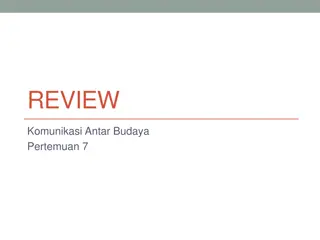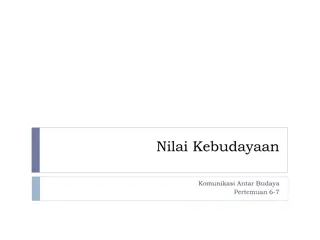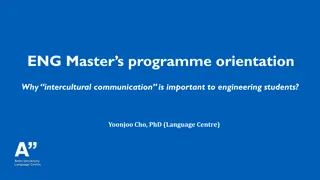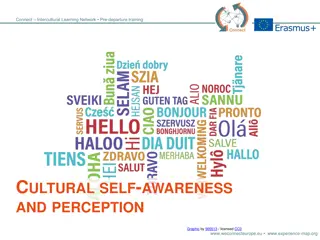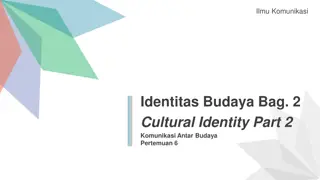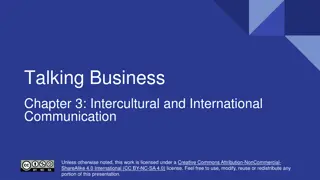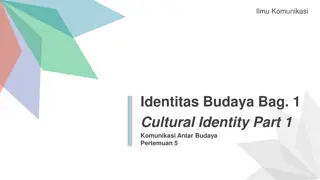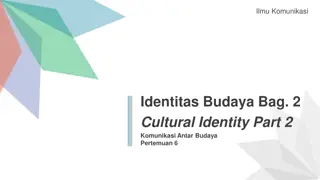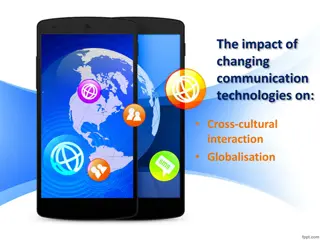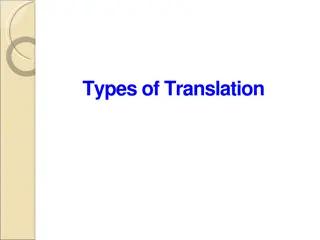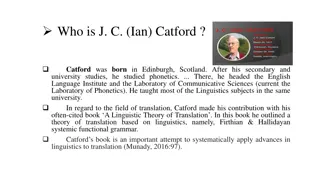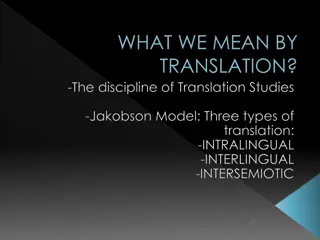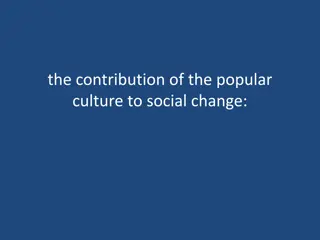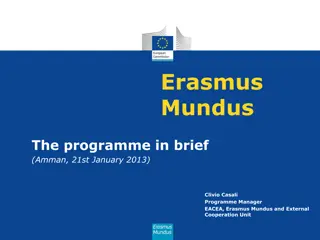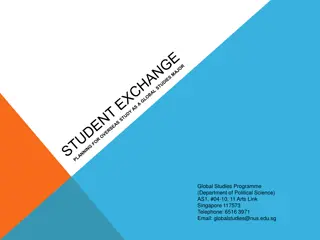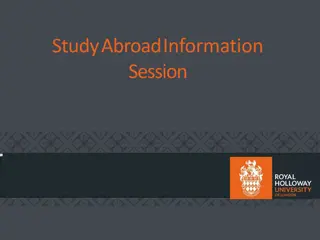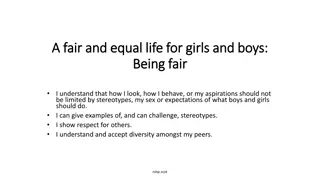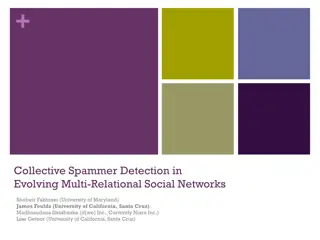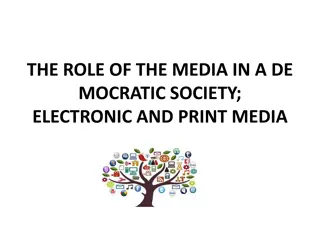The Evolving Role of Translators in Promoting Intercultural Understanding
The role of translators goes beyond mere translation; they serve as ambassadors between cultures, bridging linguistic and cultural gaps. By providing insights and foregrounding differences, translators play a crucial role in fostering intercultural understanding in our increasingly borderless world.
Download Presentation

Please find below an Image/Link to download the presentation.
The content on the website is provided AS IS for your information and personal use only. It may not be sold, licensed, or shared on other websites without obtaining consent from the author. Download presentation by click this link. If you encounter any issues during the download, it is possible that the publisher has removed the file from their server.
E N D
Presentation Transcript
The role of the translator The position of the translator is as difficult to define as the term translation itself. But the future role of the translator is less open to question. She/He must be seen as the key figure in promoting better understanding among peoples and nations. She must not be regarded as anonymous .She/He is invisible only when a communication is clear and leaves nothing to question.
In other cases, where there is doubt or cultural biasshe should write a separate preface, explaining how she has treated the work, how she has interpreted any controversial key-terms a translated novel without a translator s preface ought to be a thing of the past, and therefore the preface as well as the work should draw the reviewer s attention. (Newmark 1983: 17)
Translators are always hard at work, but they are producing translations, not translation commentary, criticism, or theory; they appear as aesthetically sensitive amateurs or talented craftsmen, but not critically self-conscious writers who develop an acute awareness of the cultural and social conditions of their work.
-the differences of the source and target cultures and languages. The act of translation involves constant decision- making. -the translator s role and intervention Translators are in a unique position to act as ambassadors between cultures because they have knowledge and understanding of both the source and target cultures of the works they have translated.
With increased understanding of one culture different to their own, readers are bound to be more open-minded towards other cultures. Clearly, in the world we live in today, where borders are being crossed more and more all the time, increased intercultural understanding is vital.
It is not only the provision of background information that leads to increased understanding; just as important is information that foregrounds cultural and linguistic differences.
When translators make themselves more visible by explaining the problems they encountered and the choices they had to make demonstrating how active their role is in creating the translated text they disclose the cultural and linguistic differences.
It is actually believed that, of all the types of translation, literary translation lets one consistently share in the creative process of translation (Landers 2001: 4-5). According to Bush, literary translation is "an original subjective activity at the center of a complex network of social and cultural practices" (Bush 1998: 127).
Repeated reading and research enable the translator to identify such patterns, though some will be translated subconsciously as part of the process of imaginative rewriting.... The literary translator creates a new pattern in a different language, based on personal reading, research, and activity. This new creation in turn becomes the basis for multiple readings and interpretations, which will go beyond any intentions of either original author or translator. (Bush 1998: 128-9)
Since the concept of culture is essential to understanding the implications for literary translation and culture- specific items in translation, many translation theorists have dealt with the definition of culture. In 1984 Larson defines culture as "a complex of beliefs, attitudes, values, and rules which a group of people share" (Larson 1984: 431). He notes that the translator needs to understand beliefs, attitudes, values, and the rules of the SL audience in order to adequately understand the ST and adequately translate it for people who have a different set of beliefs, attitudes, values, and rules.
Newmark remarks that culture is "the way of life and its manifestations that are peculiar to a community that uses a particular language as its means of expression" (Newmark 1998: 94). Here, he asserts that each language group has its own culturally specific features. Translating culture-specific items in literary translations seems to be one of the most challenging tasks to be performed by a translator.
Baker refers to such cultural words and concedes that the SL words may express a concept which is totally unknown in the target culture. She points out that the concept in question may be "abstract or concrete, it may relate to a religious belief, a social custom, or even a type of food." Baker then, calls such concepts 'culture-specific items' (Baker 1992: 21). Nord uses the term 'cultureme' to refer to these culture specific items. He defines cultureme as "a cultural phenomenon that is present in culture X but not present (in the same way) in culture Y" (Nord 1997: 34).
One of the most difficult problems in translating literary texts is found in the differences between cultures. People of a given culture look at things from their own perspective. Indeed, one of the most difficult problems in translating literary texts is found in the differences between cultures.
A translator who uses a cultural approach is simply recognizing that each language contains elements which are derived from its culture that every text is anchored in a specific culture, and that conventions of reception vary from culture to culture. text production and





